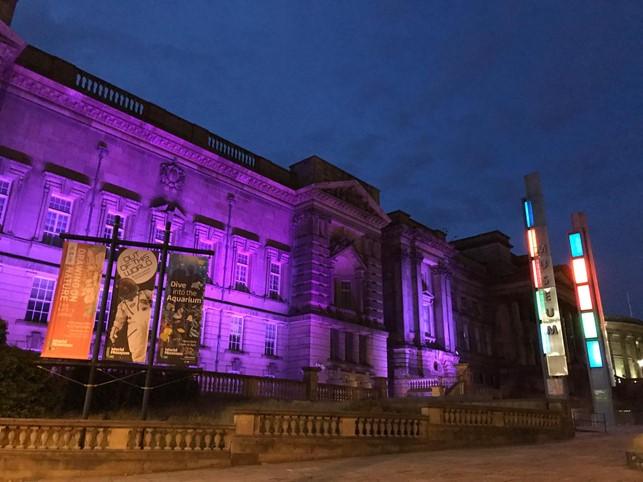World Cultures gallery
The World Cultures gallery displays National Museums Liverpool’s huge collections from Africa, The Americas, Asia and Oceania. Featuring more than 1,600 objects, the gallery explores the exchange of ideas and objects between Europe and the many cultures represented in the displays. However, it is more than 15 years old, and we acknowledge that a much-needed change is long overdue. The recent global events have created a watershed moment and a greater cultural and racial understanding and awareness is paramount.

The urgency for change has never been more profound than now. Collectively we have a responsibility to actively engage and dismantle racist behaviour, and this includes within our own museums and collections too. We need to accelerate the hard work of decolonising our collections and displays and work more with our communities to serve them. This responsibility lies with all of us, and the public to hold museums – as educational institutions – accountable.
The World Cultures gallery displays National Museums Liverpool’s huge collections from Africa, The Americas, Asia and Oceania. Featuring more than 1,600 objects, the gallery explores the exchange of ideas and objects between Europe and the many cultures represented in the displays. However, it is more than 15 years old, and we acknowledge that a much-needed change is long overdue. The recent global events have created a watershed moment and a greater cultural and racial understanding and awareness is paramount.
Emma Martin, Lead Curator of Globalisation comments:
"For more than 15 years, curators at World Museum have been researching the histories of World Museum's colonial collections. It has been important for us to recover Black, Indigenous and People of Colour (BIPOC) identities and actions connected to the museum's collection. This work is at the heart of what we do, but this work has not always found its way into the galleries. We must do better, so that BIPOC voices from the past and present are heard and respected in a gallery that still privileges the actions of White colonial collectors."
"When I take people around the gallery and introduce the changes, we are working towards I describe the gallery as it currently stands as racist. Depending on the audience this often draws an instant reaction of surprise and doubt. If you are White, it takes time to see that what we have here is a series of displays that stereotype and classify people and place. We sustain and support a view of the world that is based on colonial thinking. That seems to me to be the very definition of racial bias. As a White curator, I am responsible for the collections and the displays, but that does not mean that I should have the power to decide how BIPOC are represented in this museum. As a White curator I need to be an ally and make sure the museum doors are held wide open; my role then, is to facilitate and champion the change that needs to happen and to do that with transparency, respect and through dialogue."
During 2019, pre Covid-19, we created a space in the gallery to help us think through what that change might be. We worked with the public to join us in this conversation. Thoughts, ideas and reactions were posted in the gallery’s discussion area –and through our online social channels. In addition, during lockdown, the team worked with Liverpool John Moores University to create a world cultures virtual gallery tour, allowing people to navigate their way around the gallery, just as you would with apps such as google earth. You can visit the gallery through our virtual tour here.
By working with a group of inspiring and creative people from outside the world of museums, who provoke and interrogate our collections, forcing us to think differently about what we do and how we think, we hope to re-display and present World Cultures Gallery in a manner that is more diverse, inclusive and tolerant. The group includes artist and filmmaker, Leo Asemota, comedian, Daliso Chaponda, poet and TIDE visiting poet Sarah Howe and filmmakers Belle Vue Productions who are documenting our collaborations.
Our research, collection and messaging is unique and so is our voice. Museums can play a significant contribution to the conversation on contemporary issues such as decolonisation, inequality and racism. We hope the World Cultures gallery can become a space that better represents the lived experiences of our visitors and colleagues.
Learn more about the conception of ‘World Cultures Where Next’ here.
